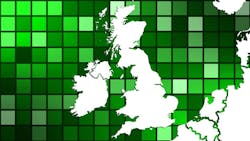UK Turns To Batteries for Frequency Response to Stabilize Increasingly Green Grid
Sam Wilkinson, Senior Research Manager, Solar and Energy Storage, at IHS Technology says that "Frequency response" is the service that is used to keep the grid stable, compensating for short-term fluctuations in supply and demand in the grid. To date, grid balancing services have been provided mainly by gas and coal plants. The uptake of batteries marks another major push towards a sustainable grid for the UK.
By awarding frequency response contracts to 200 MW of battery projects, the UK is following a global trend towards using batteries to balance the power grid, making it a major global energy storage market, and helping it balance a grid that is becomingly increasingly dependent on renewable sources. After several years of rapid cost declines, batteries are increasingly competing with conventional thermal generators as an economically viable and superior way of providing grid services.
Globally, batteries are gaining a major foothold in this market, thanks to significant cost reductions over the last 3 years and as they are able to react almost instantaneously, absorbing and injecting power to keep the grid stable. This is a major driver of a predicted 1,800 MW of batteries being connected to grids around the world in 2016, according to IHS Markit analysis.
The 201 MW of batteries that the UK now plans to build throughout 2017 and 2018 represents a significant share of the global market for utility-scale batteries connected to the grid in 2017 and 2018.

